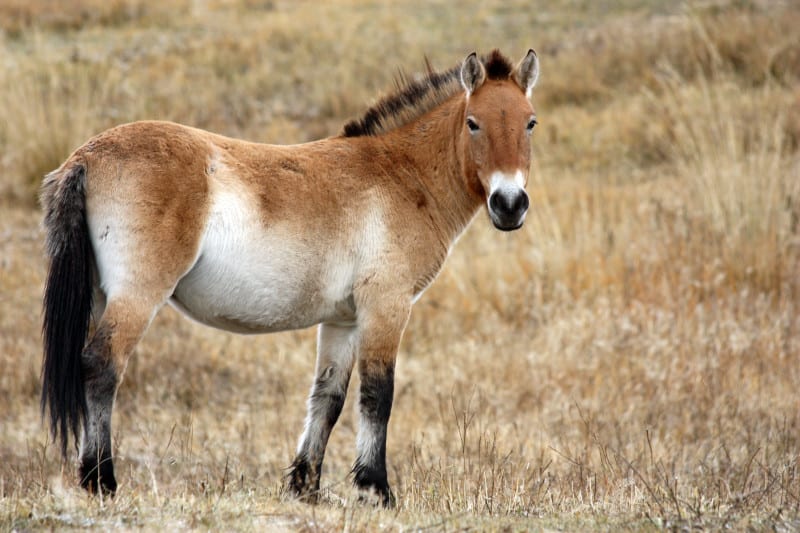
Mongolian Wild Horse Facts
- Most notably, the wonderful Mongolian Wild Horse remains a limited success story. This fact holds true due to recent events. Quite sadly, this species of horse became extinct in the wild in the 1960’s.
- However, a limited number of individuals still existed in captivity, mostly in zoos around the world. But, in 1979, a concerted effort to increase breeding stock began. As a result, scientists reintroduced a population to the wild in Khustain Nuruu National Park.
- Furthermore, this amazing horse has played an important role in history. That’s because DNA evidence proves that most breeds of wild horses living today, throughout the world, descended from this species.
- But, the newly-founded wild populations remain small. This, therefore, makes them vulnerable to many threats. These include climate change. As a result, the IUCN presently lists it as Endangered.
Related Articles
Mongolian Wild Horse Physical Description
Firstly, the beautiful Mongolian Wild Horse displays no noticeable degree of sexual dimorphism. In this, the amazing variety of wild horse remains very similar to the majority of other types of horses throughout the world.
However, it does possess a somewhat stockier body shape than most domesticated breeds. Furthermore, it also develops comparatively short legs. Due to this, most individuals average roughly 56 in (142 cm) in height at the shoulder.
In addition, the magnificent animal attains an average body length of about 6 ft 11 in (2.1 m). But, because of its stockier build, its weight might surprise you. In fact, the equine typically weighs around 660 lbs (300 kg).
It generally presents a dun color scheme. As a result, the majority of the coat shows a light tan in color. But, the legs, tail, and mane almost always show a black to deep reddish-black color. Finally, the tail usually reaches a length of about 35.4 in (90 cm).
- Kingdom: Animalia
- Phylum: Chordata
- Class: Mammalia
- Order: Perisoodactyla
- Family: Equidae
- Genus: Equus
- Species: E. f. przewalskii
Mongolian Wild Horse Distribution, Habitat, and Ecology
First of all, it must be pointed out that the current distribution of the Mongolian Wild Horse remains limited to Parks and Reserves. But, it originally inhabited a broad range of the continent of Asia.
As a result, it evolved to thrive in a variety of areas in that ecosystem. Further, these primarily included savannas, grasslands, and regions of shrub. Therefore, it originally thrived in wide open areas.
Also, in the wild, it lives in small but permanent family groupings. These usually consist of one male, 1-3 females, and the various offspring. However, the offspring generally depart the group after reaching maturity.
Like all known types of horse, the Mongolian Wild Horse evolved as a herbivore. However, its dietary preference commonly varies with the season. As a result, it commonly feeds on a different plant in each of the four seasons.
Species Sharing Its Range
Check out our other articles on 5 Rare Mind-Blowing Cloud Types, Pacu, Mount Erebus, Leaping Lesbian Lizard, Menzie’s Wallflower, Vampire Moth, Bornean Flat Headed Frog, Serval
